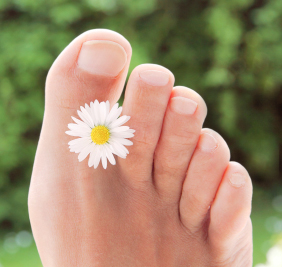
More evidence that low-calorie sweeteners are bad for your health
Studies show that artificial sweeteners can raise the risk of hypertension, metabolic syndrome, type 2 diabetes and heart disease, including stroke.

Q – Is there anything, apart from conventional antifungals, that can be done to cure persistent fungal nail infection? I have suffered from this condition for several years and nothing seems to cure it completely.
A – While this type of infection is less common than athlete’s foot, it is thought that fungal infection of the nail affect around 2-3% of the people in the UK. The condition (also known as called onychomycosis, or tinea unguim) is more common on the toenails than the fingernails and is generally thought to strike younger people such as swimmers and athletes who are more likely to be sharing communal showers.
However, recent research suggests that around 10% of the general population, 20% of the population aged 60+ years, up to 50% of people aged70+ years (especially in institutionalised) and up to one-third of diabetic individuals also have onychomycosis.
Those who spend a lot of time with their hands in water such as cooks and cleaners are also at higher risk as the water and cleaning agents can damage the protective skin at the base of the nail and allow fungus to take hold.
Hard to treat
Because nail infection can develop as a result of fungal skin infection there is a link with athlete’s foot. Treating fungal skin infections, which are relatively easy to cure, as soon as they are recognised is an important way of preventing this spread. Fungal nail infections, on the other hand can spread quickly and be extremely difficult to treat whichever type of medicine you choose.
Some people even choose not to treat, especially if the condition is not causing any pain and only mild discolouration and malformation of the nail.
Conventional treatment usually consists of a long course of oral antifungals such as griseofulvin or terbinafine, with often poor success rates. Griseofulvin has only a 50-70% success rate and sometimes produces adverse effects such as headaches and nausea. It must be taken until the nail grows out – 6 to 12 months) and liver damage is associated with its long term use. Terbinafine is taken for 12 weeks only, also has a 50-70% success rate. Its use is associated with stomach problems such as nausea, loss of appetite, abdominal pain, diarrhoea, skin eruptions, and kidney dysfunction, including jaundice and hepatitis.
Alternatively some doctors recommend anti-fungal nail paints – which may be useful if the infection is confined towards the end of the nail. Even so this may require lengthy and conscientious applications to combat the problem.
Treatment with ultraviolet light has also shown some benefit.
Alternatives that help
Some alternative remedies may help. Tea tree oil contains powerful anti-fungal components which can be useful in treating nail infections. In one study neat tea tree oil applied to the nail was shown to be as effective as the topical antifungal clotrimazole. In another, 10% solution of tea tree oil was as effective in treating athlete’s foot as the over the counter drug tolnaftate.
In one recent placebo controlled trial 60 patients with nail infection aged 18-80 achieved an 80% cure rate after 16 weeks of applying a 5% solution of the oil in a lotion base directly on the infected nail. None of those who were cured experienced a recurrence of infection. If you are self-treating try applying the oil neat, twice a day.
Ajoene, a garlic derived organic trisulphur has demonstrated an ability to keep athlete’s foot in check. Applied to nail infections it may be similarly effective.
Other topical antifungals you might consider include goldenseal, echinacea and chamomile. While no research exists to substantiate it some practitioners also recommend olive leaf extract – which does have anti-fungal properties – to treat topical fungal infections of the skin and nails.
A weak solution of hydrogen peroxide applied twice daily to the nail may also help.
Diet & more
In addition to these pay attention to good nutrition. Try to increase your intake of dietary garlic, as well as considering a low-sugar anti-candida diet that deprives the fungus of the food it needs to grow and multiply.
Supplementing with vitamin C (500mg daily) will boost immunity. A good quality B complex and vitamin E may also be supportive.
Sunlight and air circulation is the enemy of fungus in the majority of cases. So wherever possible swap hot damp shoes and socks for going barefoot or wearing open toe sandals.
Good hygiene is essential – see our tips here – and make sure you don’t share towels etc with others in your home. When treating fungal nail infection, it is also advisable to keep a special pair of scissors to trim the old infected nail as it grows out to prevent any risk of reinfection.
However you choose to approach it remember to be patient. The condition is hard to treat in part because nails generally grow slowly. Even when the treatment is successful it can take several months for fresh, new nail to begin to grow back.

Please subscribe me to your newsletter mailing list. I have read the
privacy statement